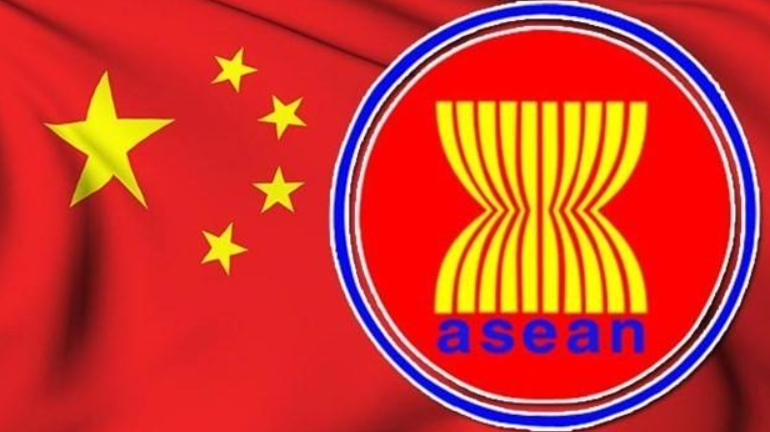In recent years, the geopolitical landscape of Southeast Asia has undergone significant changes, with public sentiment increasingly favoring China over the United States. A recent survey suggests that a majority of Southeast Asian nations would choose China over the U.S., highlighting a shift rooted in both economic considerations and reactions to American foreign policy.
The Economic Pull of China
China’s aggressive economic strategy in the region, particularly through initiatives like the Belt and Road Initiative (BRI), has made it an attractive partner for Southeast Asian countries. The BRI promises substantial investments in infrastructure, which many nations see as a path to economic development. Countries such as Indonesia, Malaysia, and Thailand have benefitted from Chinese funding and expertise in building critical infrastructure like roads, railways, and ports.
In contrast, American engagement in the region has often come with political strings attached. The U.S. tends to emphasize democratic values and human rights in its foreign policy, expecting nations to align with its positions, especially regarding issues like the ongoing conflict in Ukraine and support for Israel. This perceived imposition of values has alienated some Southeast Asian governments, which prefer to maintain a more pragmatic approach in their international relations.
Discontent with U.S. Policies
The U.S.’s staunch support for Israel has also impacted its relations with Southeast Asia. In predominantly Muslim countries such as Malaysia and Indonesia, there is significant sympathy for the Palestinian cause. The U.S.’s repeated vetoes of United Nations resolutions condemning Israel’s actions have created friction and resentment in the region.
Southeast Asian nations are increasingly vocal about their discontent with U.S. policies that appear to disregard local sentiments. For example, Indonesia’s foreign ministry has expressed concerns over the humanitarian situation in Palestine, criticizing America’s unwavering support for Israel. This has prompted leaders to seek more balanced relationships with global powers, including China, which promotes a narrative of non-interference in domestic affairs.
Diverging Stances on Global Issues
Southeast Asia’s cautious approach to the Ukraine conflict underscores a broader trend of hesitance to align closely with U.S. foreign policy. Many Southeast Asian nations have opted for neutrality, balancing their ties with both Russia and China rather than adopting an adversarial stance toward Russia, as the U.S. has done. This inclination to maintain economic and diplomatic ties with all major powers reflects a pragmatic approach aimed at safeguarding national interests.
Moreover, the lack of enthusiasm for U.S. military involvement in international conflicts resonates in Southeast Asia. Leaders in the region remember the costly consequences of prolonged military engagements and are wary of being dragged into conflicts that do not directly affect their national security. This wariness is part of a broader sentiment in Southeast Asia that emphasizes stability and economic growth over ideological alignment.
China’s Strategic Engagement
China’s approach in Southeast Asia, characterized by investment and a focus on mutual economic benefit, contrasts sharply with the U.S. model. Chinese investments often come without the political conditions that accompany U.S. aid, making them more appealing to many governments in the region. As a result, China has been able to position itself as a key partner in economic development, with countries across Southeast Asia increasingly seeing Beijing as a more reliable ally.
Moreover, the COVID-19 pandemic has shifted priorities for many Southeast Asian governments, reinforcing the need for economic recovery. In this context, China’s rapid economic rebound and support during the pandemic through vaccine diplomacy have further strengthened its position in the region. Countries like Vietnam and Thailand have engaged in significant trade with China, capitalizing on economic interdependence to bolster their recovery efforts.
The Road Ahead: America’s Dilemma
As Southeast Asia continues to pivot towards China, the U.S. finds itself in a precarious position. Its failure to effectively engage with regional leaders, particularly on issues that matter to them, such as economic cooperation and infrastructure development, could lead to a further decline in influence.
The U.S. must reassess its strategy in Southeast Asia, moving away from a singular focus on ideological alignment and towards a more balanced approach that respects local priorities. As regional sentiments continue to shift, America risks losing its foothold in a region that is becoming increasingly vital in global geopolitics.
In summary, the preferences of Southeast Asian nations for China over the U.S. signal a critical juncture in international relations. The combination of economic opportunities offered by China and growing discontent with U.S. policies reflects a pragmatic shift in the region, one that could reshape the balance of power in Southeast Asia for years to come.

